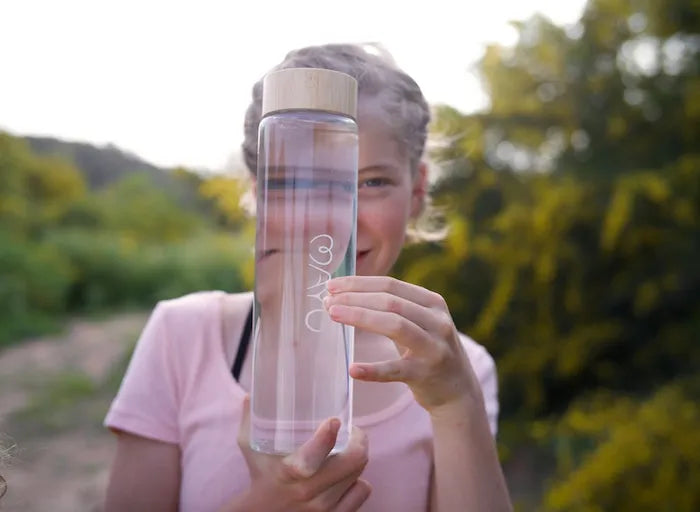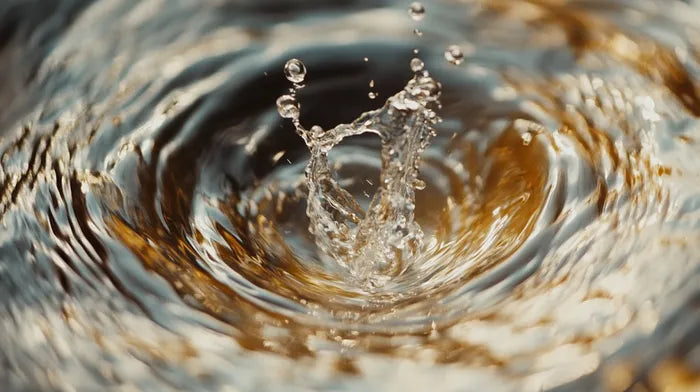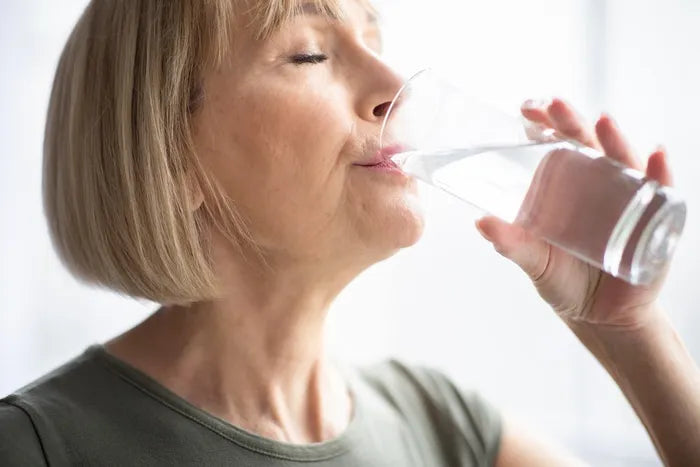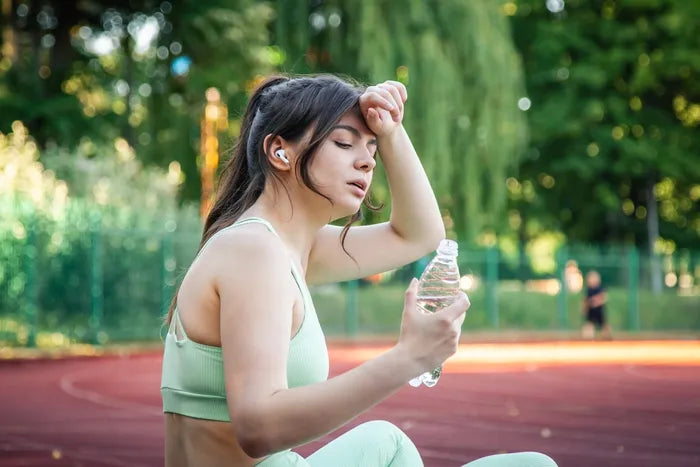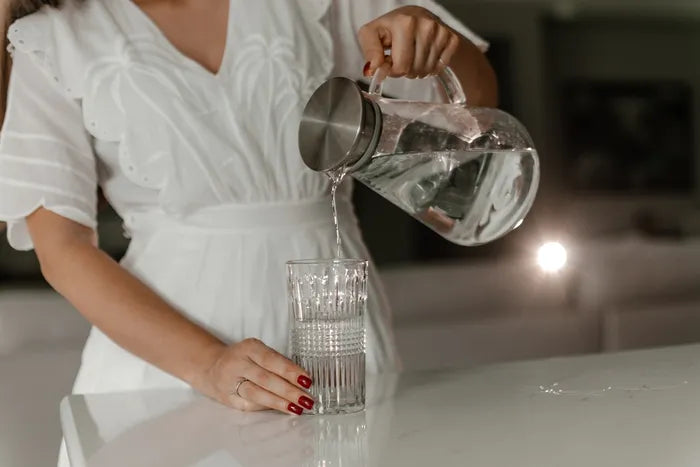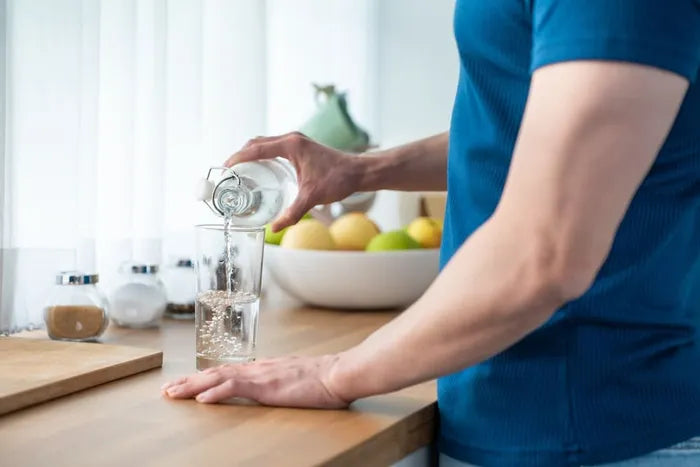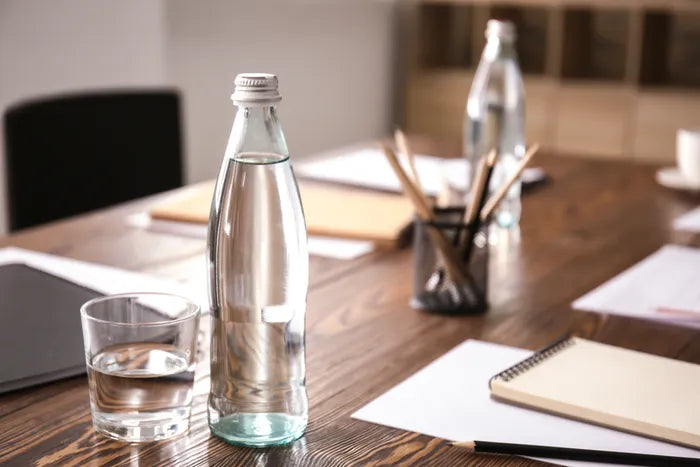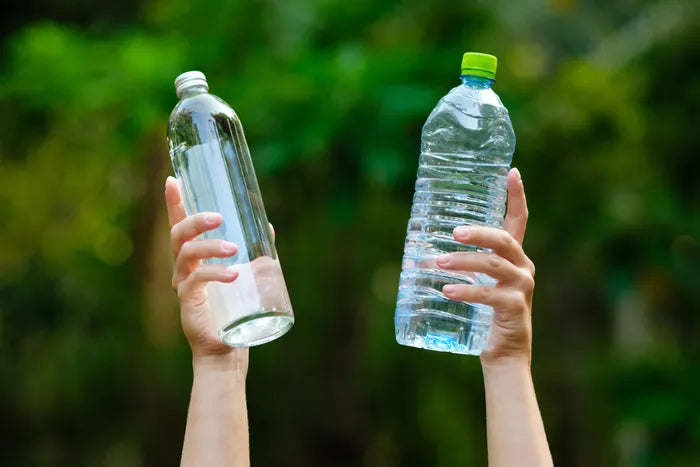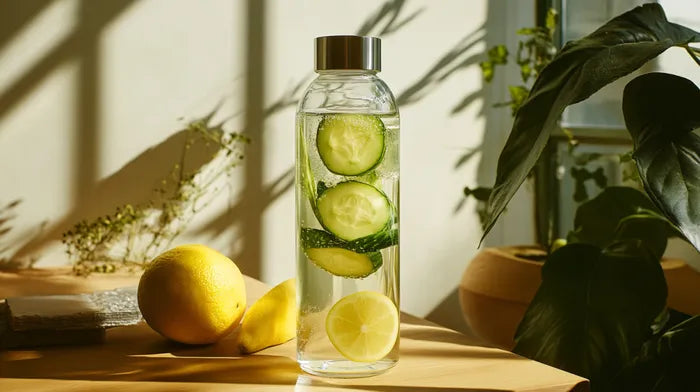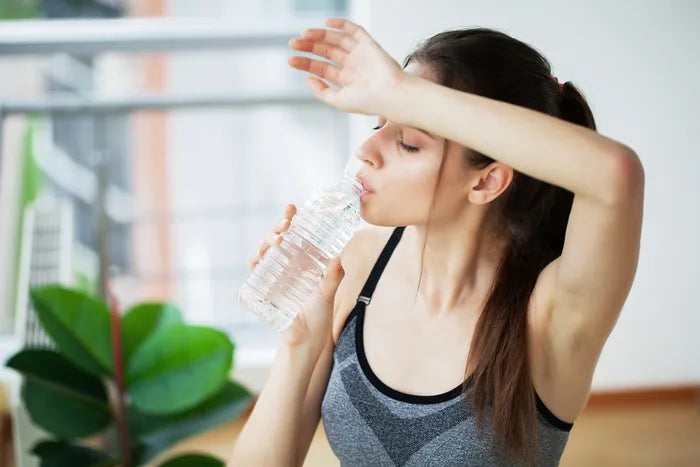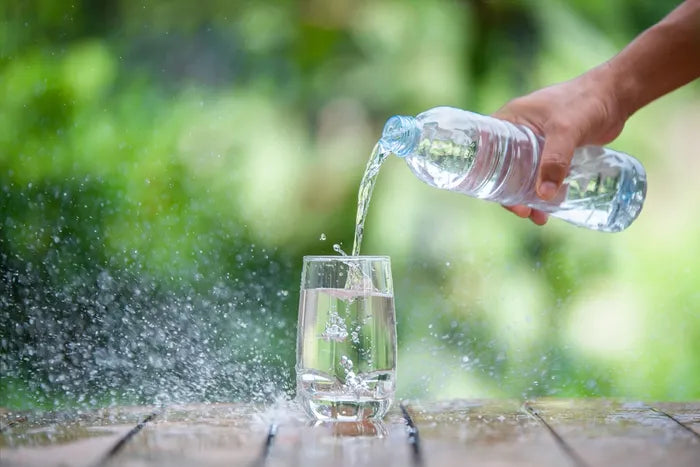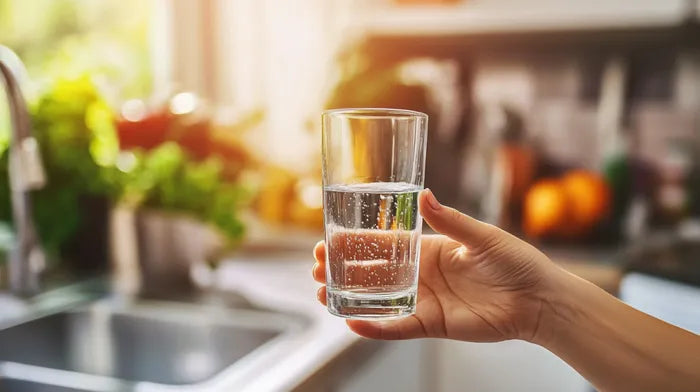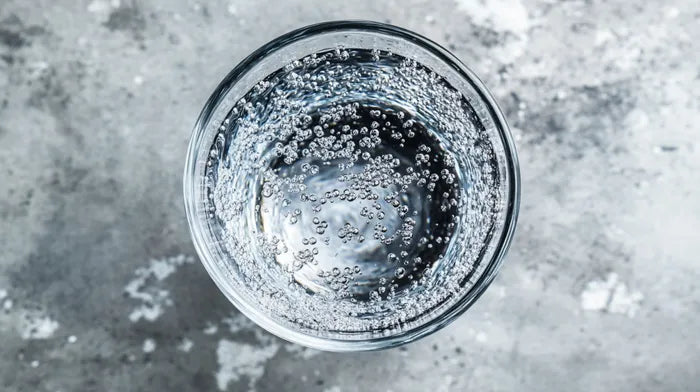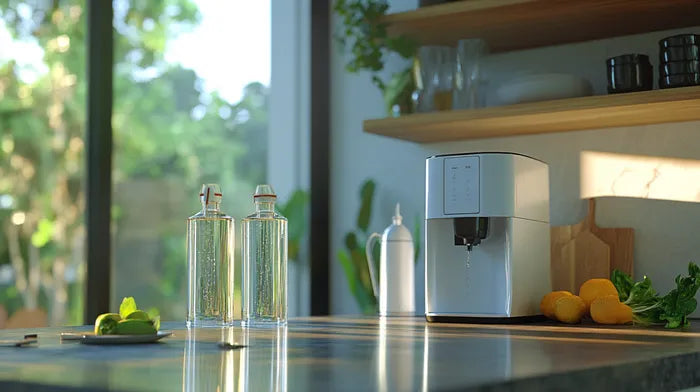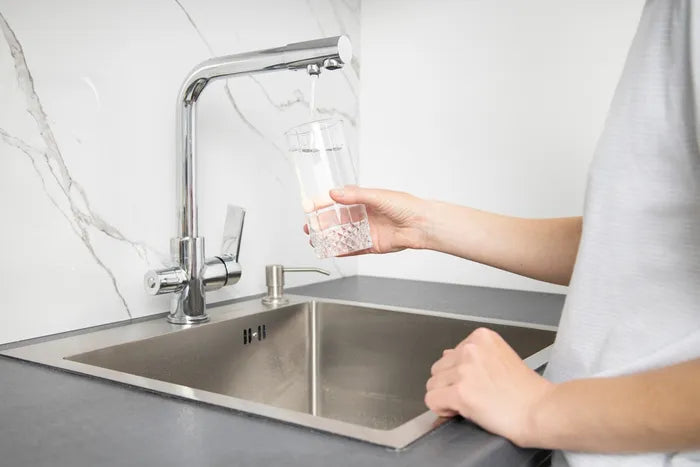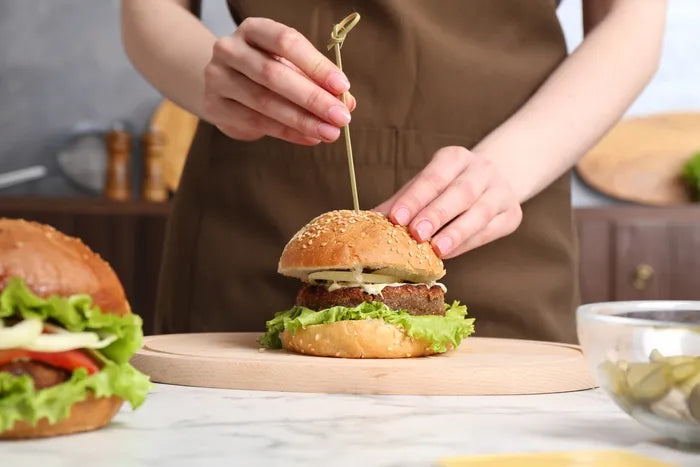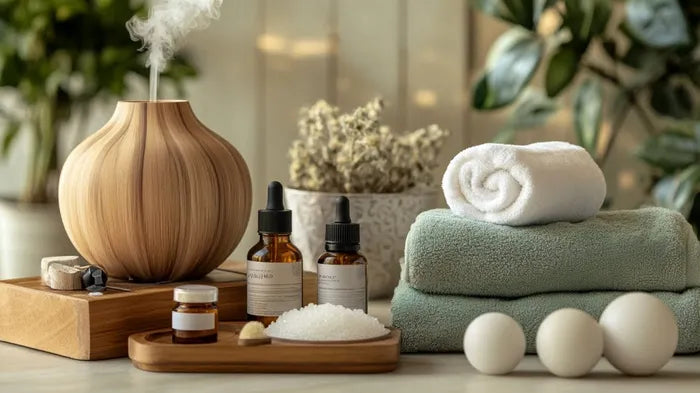10 Best Drinks for CKD: Quench Your Thirst Safely
Most people with CKD worry about food. But the drinks in your fridge could be doing just as much damage. Here’s how to choose the ones that support your kidneys—and skip the ones that silently make things worse.
Updated May 7, 2025

Not all drinks are safe for people with chronic kidney disease (CKD). Some help the kidneys do their job. Others make it harder. The trick is knowing which is which—and when to drink them.
This guide breaks it down by drink type. For each one, you'll see which CKD stages it's safe for and how to drink it without making things worse.
» CKD relief starts with clean, mineral-rich water: Try the Full Cycle System
What You Drink Matters More Than You Think
Chronic Kidney Disease (CKD) doesn’t hit all at once. It gets worse over time. Most people don’t notice it until their kidneys are already struggling. By then, a simple mistake—like drinking too much of the wrong thing—can have real consequences.
The kidneys’ job is to filter waste and extra fluid from your blood. But CKD makes that harder. As filtration slows down, waste builds up. Electrolytes like sodium, potassium, and phosphate fall out of balance. Your body holds onto fluid it should be flushing out.
Doctors use something called GFR—glomerular filtration rate—to measure kidney function. If your GFR drops below 60 for more than three months, you’ve got CKD. The lower it goes, the more careful you have to be [1].
Here’s why fluids are tricky
In early CKD (Stages 1–3), your kidneys still work well enough to handle normal hydration—unless you’ve got heart failure or another issue. But later on (Stages 4–5), your kidneys can’t get rid of extra fluid [2]. That’s when you start seeing swelling, shortness of breath, and high blood pressure.
Once you reach dialysis, the rules get strict. You might be limited to just 1–1.5 liters of fluid per day, including all drinks, soups, fruits, and even ice. Go over, and you risk water intoxication, increasing the risk of heart problems and hospital visits.
» Check out the best water types to drink for healthy kidneys
1. Plain Water
- Best For: CKD Stages 1–3
- Use With Caution: CKD Stage 4, Dialysis
Water keeps the kidneys working. In the early stages of CKD, it’s the best thing you can drink. It supports filtration, helps flush toxins, and keeps blood pressure in check.
But the later the stage, the less water your kidneys can handle. In Stage 4 or during dialysis, too much water builds up fast. That leads to swelling, shortness of breath, and high blood pressure. At that point, you need to measure and monitor water intake.
If your urine is light yellow and your weight stays stable, you’re probably drinking the right amount.
Pro Tip: Want to make your water safer and more supportive for early-stage CKD? Try the MAYU Full Cycle system.
It filters out contaminants, adds essential minerals back in, and uses natural aeration to boost oxygen levels—mimicking the Earth’s water cycle for clean, mineral-rich hydration that's easier on your kidneys.
2. Ice Chips
- Best For: Dialysis patients
Dialysis removes dehydrates your body, but only every few days. That means even a small fluid overload can hurt. Ice chips are a smart workaround. They quench thirst without flooding your system.
Quick Tip: 1 cup of ice is about ½ cup of water. Keep track.
» Find out how to check for dehydration
3. Fruit-Infused Water
- Best For: CKD Stages 1–3
- Use With Caution: Dialysis (monitor potassium)
Flavor helps people drink more water. But fruit juices are risky, especially if you have to watch your potassium or sugar. Infusing water with low-potassium fruits like apple slices, berries, cucumber, lemon, or mint adds taste without the electrolyte overload.
Warning: Don’t eat the fruit. Just use it for flavor, then toss it.
» Check out the most refreshing drinks you can make at home
4. Herbal Teas
- Best For: CKD Stages 1–2
- Use With Caution: Stage 3
- Avoid: Unregulated herbs or teas with licorice
Chamomile and hibiscus tea are two of the safest picks. These drinks are caffeine-free, hydrate well, and may reduce inflammation. Some studies say hibiscus may also help lower blood pressure [3].
But not all herbal teas are created equal. Some, like licorice root or so-called “kidney detox” blends, can be dangerous. Rule of thumb: If it sounds like medicine, ask your doctor before drinking it.
» Discover the best times of the day to drink water for optimal hydration
5. Barley Water
- Best For: CKD Stages 1–2
It’s an old remedy, and a good one. Barley water acts as a gentle diuretic. It helps your body flush waste, lowers blood sugar, and may even help manage cholesterol. Just don’t add salt or sugar when preparing it. You want it plain.
» Lear how to balance electrolytes with diabetes
6. Rice Water
- Best For: CKD Stage 3
This is the water left over from boiling rice. It’s easy on the kidneys and low in potassium, phosphorus, and sodium. It hydrates. It offers a little energy. And unlike electrolyte drinks, it won’t spike anything. Skip it if: It’s made with added salt or sugar. Keep it simple.
» Not all water is equal: Discover the healthiest types of water to drink
7. Unsweetened Cranberry Juice
- Best For: CKD Stage 3
- Use With Caution: Stage 4 (dilute it)
Cranberry juice can help protect against urinary tract infections—something CKD patients are more prone to. But it should always be unsweetened and diluted. Limit it to small servings, no more than 4 oz/day.
» Check out the best drinks to have when you're sick
8. Unsweetened Almond Milk
- Best For: CKD Stage 4
Regular milk has too much potassium and phosphorus for later-stage CKD. Unsweetened almond milk is a better choice. It’s low in electrolytes. Low in calories. And safer for your kidneys. You should also check the label: Avoid versions with phosphate additives or added sugar.
» Find out how to stay hydrated in hot weather
9. Sorrel Tea (Hibiscus)
- Best For: CKD Stage 4
This Caribbean version of hibiscus tea is low in potassium and sodium. It hydrates and offers antioxidant support. Again, keep it plain. No sugar, no spice.
» Check out the benefits of mineral water for inflammation
10. Diluted Apple or Grape Juice
- Best For: CKD Stage 4
- Use With Caution: Dialysis
These are among the few fruit juices with lower potassium levels. Still, they’re sweet and should be diluted—half juice, half water. Stick to small amounts. Measure carefully.
» Discover the best lemon water alternatives for a morning pick-me-up
What to Avoid Drinking With CKD
- Coconut water (too high in potassium)
- Sports drinks (electrolyte bombs)
- Regular fruit juice (even “healthy” ones like orange or pomegranate)
- Unlabeled herbal teas
Don’t Fall for Detox Myths
More water doesn’t always mean better kidneys. In CKD, too much fluid can make things worse, causing swelling, high blood pressure, or even lung issues. Another myth? That “kidney detox” teas or cleanses heal damaged kidneys. They don’t.
Many are unregulated, high in potassium, or interfere with medications. The National Kidney Foundation warns against using these without medical guidance. If a drink claims to fix your kidneys, it’s probably not safe for them [4].
» Find out if the master cleanse detox diet really works
Stay Smart About What You Sip
Your kidneys can’t afford guesswork. Whether you're in early CKD or on dialysis, the right drinks support your health, and the wrong ones can undo progress fast. Read labels. Track fluid intake. Ask your nephrologist before trying something new.
Want hydration that supports your body without the junk? Try MAYU’s Full Cycle. It’s a zero-additive electrolyte blend designed to restore essential minerals without overloading your kidneys—perfect for those who need to hydrate with care.
References:
- S. R. Vaidya and N. R. Aeddula, “Chronic kidney disease,” StatPearls - NCBI Bookshelf, Jul. 31, 2024. Available: https://www.ncbi.nlm.nih.gov/books/NBK535404/
- A. De Ruiter, A. Bello, and B. Braam, “Fluid management in chronic kidney disease: what is too much, what is the distribution, and how to manage fluid overload in patients with chronic kidney disease?,” Current Opinion in Nephrology & Hypertension, vol. 29, no. 6, pp. 572–580, Sep. 2020, doi: 10.1097/mnh.0000000000000640. Available: https://pubmed.ncbi.nlm.nih.gov/32889980/
- D. L. McKay, C. O. Chen, E. Saltzman, and J. B. Blumberg, “Hibiscus Sabdariffa L. tea (Tisane) lowers blood pressure in prehypertensive and mildly hypertensive adults,” Journal of Nutrition, vol. 140, no. 2, pp. 298–303, Dec. 2009, doi: 10.3945/jn.109.115097. Available: https://pubmed.ncbi.nlm.nih.gov/20018807/
- “Herbal supplements and kidney disease,” National Kidney Foundation. Available: https://www.kidney.org/kidney-topics/herbal-supplements-and-kidney-disease
Disclaimer: The information published by Mayu Water is not a substitute for the expert knowledge, advice, and recommendations of trained professionals. We strongly recommend consulting with industry experts and primary or scientific sources before making any health, research-related, or other important decisions.













